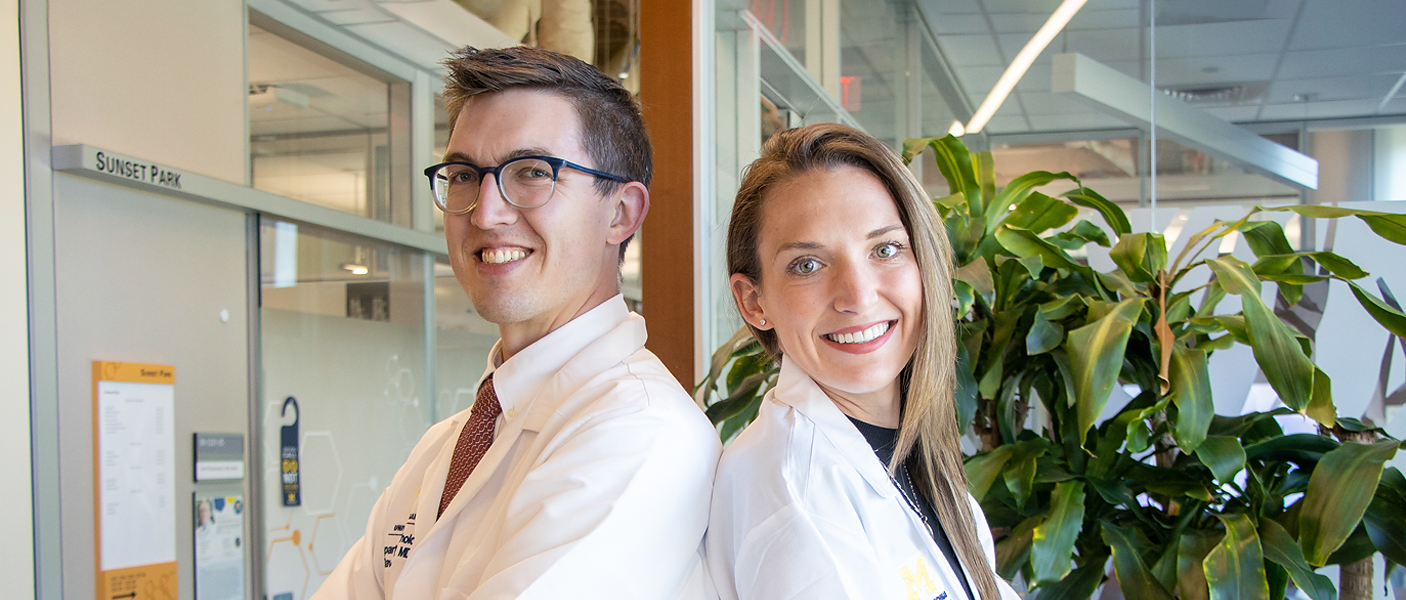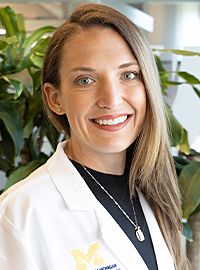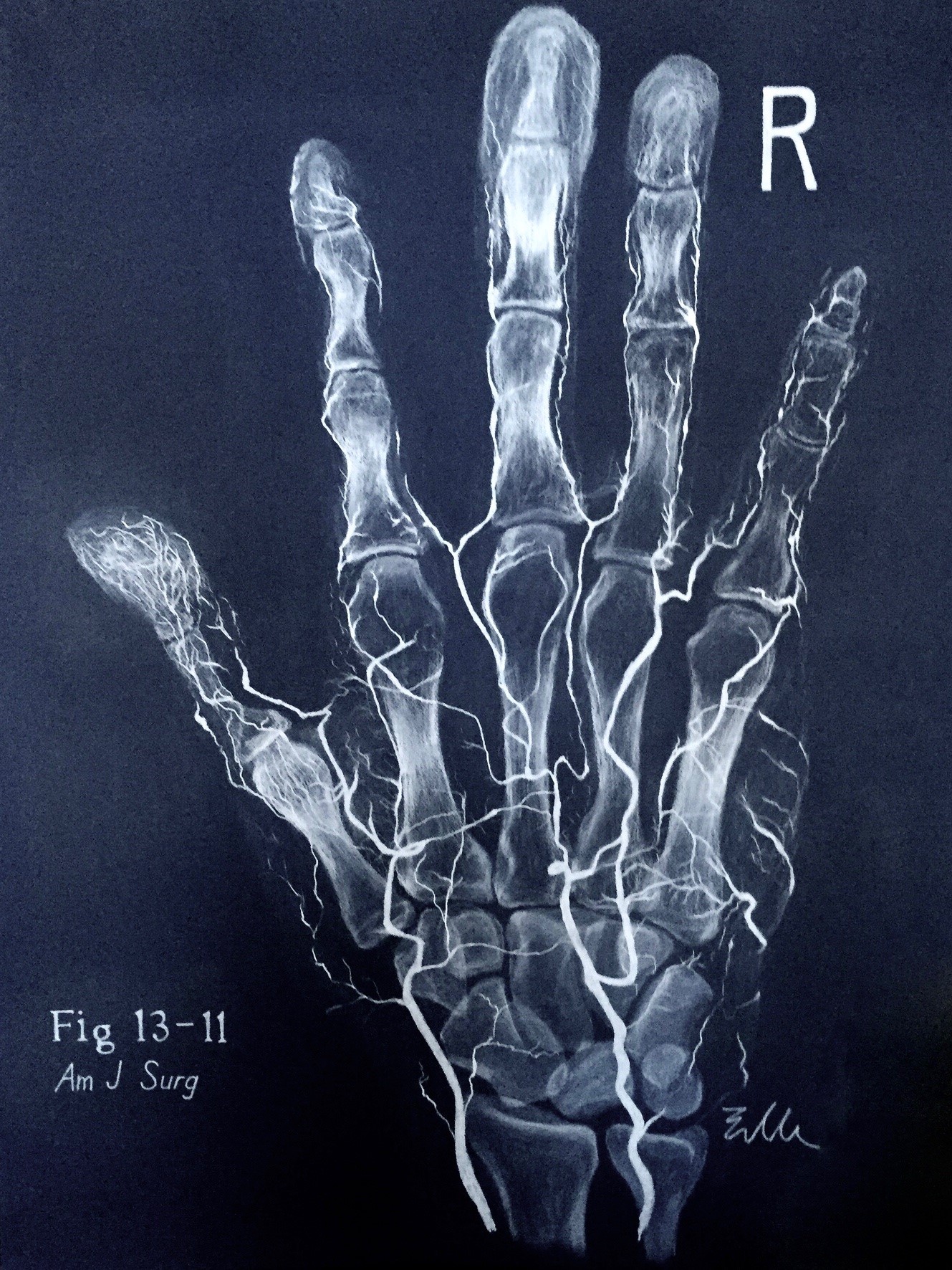

A farm boy from mid-Michigan and a doctor’s daughter from Portland, Oregon seem like an unlikely pairing. David grew up about one hour west of Ann Arbor and attended the University of Michigan for his undergraduate training in microbiology and German. Meanwhile, Elle was attending Cornell University. As David moved on to medical school at Columbia in New York City, Elle relocated to the University of North Carolina for her medical training. Then they both matched at the University of Chicago for Residency training in Pathology and found their personal match in each other and were married, becoming Drs. David and Elle Chapel. At the completion of his residency training, David relocated to Brigham and Women’s Hospital for a gynecologic and perinatal pathology fellowship. Elle, who was still in her residency training, transferred to Brigham and Women’s Hospital to complete her residency followed by breast and surgical pathology fellowships. David reflected, “If I hadn’t gone to Chicago, I never would have met Elle. I have been very blessed. Everything has worked out better than I could have hoped for.”
Meanwhile, the Department of Pathology at the University of Michigan posted openings for two “hospitalist” positions. These newly created positions would focus on the frozen section service and interface with clinical colleagues from the hospitals and ambulatory surgical sites affiliated with Michigan Medicine. A new concept in pathology, these positions would form the foundation for what may eventually become a new sub-specialty in the field. David and Elle relished the opportunities and challenges this would afford and, about eight months ago, moved to Michigan to launch their careers.
 Elle came to the field of pathology in a rather circuitous route. Her father was a surgeon and she didn’t relish the lifestyle of surgeons, but knew she wanted to be in medicine. She considered ophthalmology, but it wasn’t a good fit. Then she decided maybe Obstetrics and Gynecology would become her career and submitted her applications for residency. But it didn’t feel “right” to her. Five days later, she began her 4th-year elective in surgical pathology. To this point, she had very limited exposure to the field other than in the context of disease process. “I didn’t know what actually happened in pathology. I got to my first day of rotation and I knew this is what I have to do for the rest of my life.” She withdrew her Ob/Gyn residency applications and refiled for pathology. As a self-described hyper-analytical person, she discovered this personality trait was a strength in pathology rather than a challenge as it would be in other fields. In addition, as an artist herself, she was drawn to the visual aspects of pathology. “It was almost like looking at a painting from an art history point of view where you look at all the subtleties of the art and that renders an impression of the artist. It is similar to pathology in many ways,” explained Elle.
Elle came to the field of pathology in a rather circuitous route. Her father was a surgeon and she didn’t relish the lifestyle of surgeons, but knew she wanted to be in medicine. She considered ophthalmology, but it wasn’t a good fit. Then she decided maybe Obstetrics and Gynecology would become her career and submitted her applications for residency. But it didn’t feel “right” to her. Five days later, she began her 4th-year elective in surgical pathology. To this point, she had very limited exposure to the field other than in the context of disease process. “I didn’t know what actually happened in pathology. I got to my first day of rotation and I knew this is what I have to do for the rest of my life.” She withdrew her Ob/Gyn residency applications and refiled for pathology. As a self-described hyper-analytical person, she discovered this personality trait was a strength in pathology rather than a challenge as it would be in other fields. In addition, as an artist herself, she was drawn to the visual aspects of pathology. “It was almost like looking at a painting from an art history point of view where you look at all the subtleties of the art and that renders an impression of the artist. It is similar to pathology in many ways,” explained Elle.
While David was a rural farm boy, his mother was a medical technologist, so he was very familiar with the field of pathology throughout his life and knew this was an option for him as he entered medical school. In deciding between pathology and internal medicine, he chose pathology because pathology offered all the intellectual stimulation of a career in hematology oncology or emergency medicine without the excessive documentation and overnight shifts. “It was the opportunity to make diagnoses driving patient care and to contribute to the academic literature through diagnosis and patient management,” he explained.
 At Michigan, David serves as a gynecologic pathologist and Elle serves as a breast pathologist. Both also fill the “pathology hospitalist” role. In this latter role, they perform frozen sections as intraoperative consultants to the surgeons as well as serve as liaisons between the surgeons and the Department of Pathology. As a new title for pathology, many of their clinical colleagues are confused by the term “hospitalist” as that has a very different meaning in Internal Medicine. Both David and Elle agree that over time, this title will either become known and accepted by clinical colleagues or it will change, but regardless, they believe that this new role has the potential to become a new academic sub-specialty in pathology. “We are looking at what it means to focus on the frozen section arena, not just clinically, but ultimately setting national practice guidelines for frozen sections, creating a body of academic work around frozen section practice, creating teaching materials for trainees, and potentially, for pathologists in community practice. We are building bridges with clinical colleagues and figuring out what is most important to them, which will enable us to provide a much better service while providing valuable insights to our pathology colleagues,” explained David. Elle added, “We have an opportunity to really focus and be a more constant presence for the surgeons, so we have a more longitudinal view of the service and can see what is and isn’t working and what sort of changes can be made. Beyond the service, we become a reference point or a go-to person for our surgeons.”
At Michigan, David serves as a gynecologic pathologist and Elle serves as a breast pathologist. Both also fill the “pathology hospitalist” role. In this latter role, they perform frozen sections as intraoperative consultants to the surgeons as well as serve as liaisons between the surgeons and the Department of Pathology. As a new title for pathology, many of their clinical colleagues are confused by the term “hospitalist” as that has a very different meaning in Internal Medicine. Both David and Elle agree that over time, this title will either become known and accepted by clinical colleagues or it will change, but regardless, they believe that this new role has the potential to become a new academic sub-specialty in pathology. “We are looking at what it means to focus on the frozen section arena, not just clinically, but ultimately setting national practice guidelines for frozen sections, creating a body of academic work around frozen section practice, creating teaching materials for trainees, and potentially, for pathologists in community practice. We are building bridges with clinical colleagues and figuring out what is most important to them, which will enable us to provide a much better service while providing valuable insights to our pathology colleagues,” explained David. Elle added, “We have an opportunity to really focus and be a more constant presence for the surgeons, so we have a more longitudinal view of the service and can see what is and isn’t working and what sort of changes can be made. Beyond the service, we become a reference point or a go-to person for our surgeons.”
Developing an uncharted position less than a year out of fellowship training is a challenge, especially since they both have other clinical responsibilities. “It is hard to navigate the clinical demands on the service with academic interests and more administrative interests that you have,” said Elle. “I think the biggest challenge is we are exploring an arena that hasn’t been fleshed out before. Pathologists who have a significant focus on frozen section and try to make it an academic discipline,” stated David. “Defining this arena and trying to get multiple things off the ground at the same time is definitely a challenge. Another challenge is trying to do this while simultaneously maintaining our activity and building our reputations in our areas of sub-specialization. We are at the cusp of creating a new sub-specialty area.”
The social aspects of the job bring the most joy to David. The interactions with clinical colleagues from both pathology and the hospital are fulfilling and enjoyable. In addition, “I have some great non-physician colleagues in the department, the PAs, histotechs, and frozen section staff. They are great! I love being in the frozen section room as I enjoy spending time with them.” Elle, too, enjoys the work she does with the clinicians. “These conversations, collaborations, they move the needle and drive patient care, and they change outcomes. I like finding something diagnostically that changes the way a clinician is thinking about the patient’s disease, be it staging or more biologically based. Every time I work with a clinician and can provide them with a bit of useful information, even if it doesn’t make a huge impact on the patient’s care, that is very rewarding!”
 For students interested in a career in pathology, Elle and David both encourage them to find out as much as they can about the field. “Recognize that pathology is not the kind of slides and pictures you are seeing as a second-year medical student. You are a collaborator and consultant to physicians. We may not go into a clinic in a white coat, but we work with patient care all the time. If you enjoy working closely with your clinical colleagues, pathology may be a great fit for you,” said Elle. “Explore broadly,” encouraged David. “I strongly encourage medical students to go into pathology as it is such a wonderful field and it offers so much! Think carefully about what you want to do because there are just so many options in this incredibly rich field that we are in from clinical pathology to anatomic pathology and new developments in molecular pathology. There are also many different practice settings, not just in academic medicine. I know people who went into private practice and they are thrilled with the opportunities there. I encourage young pathologists to consider all the options open to them.”
For students interested in a career in pathology, Elle and David both encourage them to find out as much as they can about the field. “Recognize that pathology is not the kind of slides and pictures you are seeing as a second-year medical student. You are a collaborator and consultant to physicians. We may not go into a clinic in a white coat, but we work with patient care all the time. If you enjoy working closely with your clinical colleagues, pathology may be a great fit for you,” said Elle. “Explore broadly,” encouraged David. “I strongly encourage medical students to go into pathology as it is such a wonderful field and it offers so much! Think carefully about what you want to do because there are just so many options in this incredibly rich field that we are in from clinical pathology to anatomic pathology and new developments in molecular pathology. There are also many different practice settings, not just in academic medicine. I know people who went into private practice and they are thrilled with the opportunities there. I encourage young pathologists to consider all the options open to them.”
When asked for some fun facts about themselves, Elle offered that she is an artist. Her preferred medium is charcoal, and she enjoys doing medical radiographs. She also likes to use watercolors for pathology art and has worked in oils and acrylics. David participated in Quiz Bowl in high school and was on the all-state team for Michigan. Today, he enjoys cooking and he loves to mow the lawn. One other exciting fun fact…they are expecting a baby at the end of March! “Elle has been doing all of this 8.5 months pregnant,” stated David. “She is amazing! I’m very proud of her.”